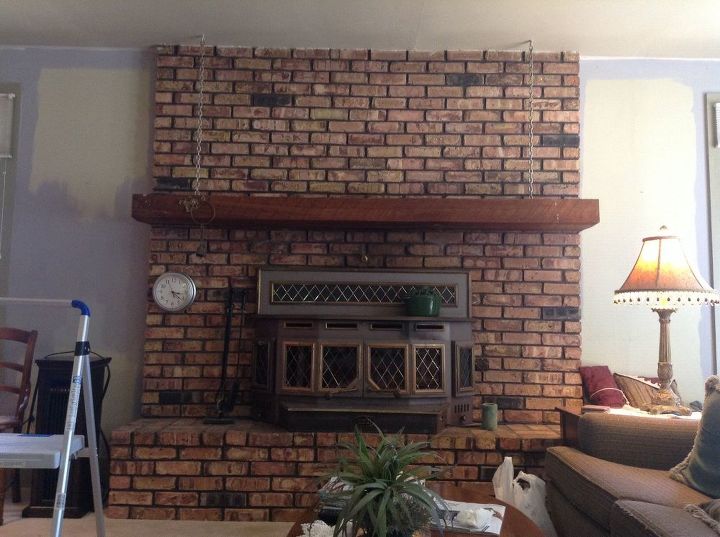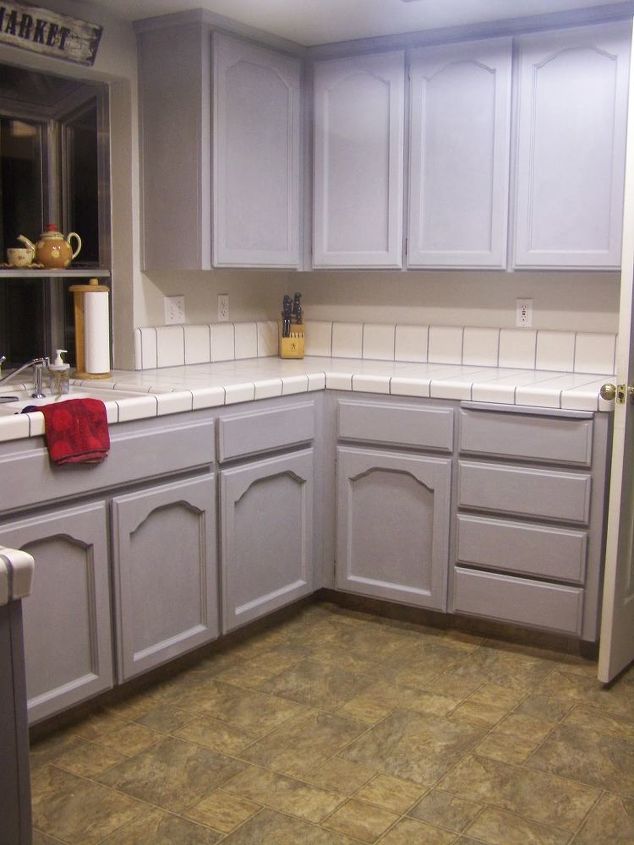How do I get rid of gray areas after applying dark walnut stain?

I sanded a walnut dresser the top brought out large gray areas after applying dark walnut stain I can’t figure out how to get rid of the gray and what caused it?
Related Discussions
Should I paint or stain my oak kitchen cabinets?
I was wondering if you could help me with something -- I have an entirely oak kitchen. I know it's the rage now to paint or gel stain cabinets. I've been considering ... See more
How to paint a metal front door?
How do I paint my front door? It's metal.
How to paint grout?
How do I paint grout to change the color? The grout is in great shape, but the color - meh.
How to whitewash a brick fireplace?
What is the best method to whitewash bricks surrounding a fireplace?
Should I re-stain or paint my cabinets?
Edit:””” 3 years later😂 I decided to paint them white and I am so very pleased with the results!We bought a new house with these ugly cabinets. I really cann... See more
Stripping off A LOT of chalk paint
I've had my first (of many, I'm sure) disastrous DIY project. I have covered my entire kitchen cabinetry with chalk paint and I hate it. It's streaky, it's cracking, ... See more





Wow, that's a really rough grit sandpaper. You usually use180 to 220 grit on furniture. Could you have sanded thru the veneer? Send a picture that would help us see the problem.
I agree with Kelli.... you didn't use emery paper by mistake?
Did you use water base stain?.....the stain has pulled the tanins out from the wood. Older cabinets and vintage furniture made of walnut are notorious for this. Does the metal on your brush have iron in it,or did you use steel wool to sand it down? that along with moisture could have caused it, reacts with tannins in walnut pulling them out of wood.
Mahogany gets star status for bleeding red or pink tannin. Knotted pine and cedar can be a challenge exposing yellow or orange bleed through.Walnut gray/black tannin. Lock in tannins with your sealer. After letting the stain dry an appropriate amount of time, apply finish. a sealer so the tannin or stain can’t penetrate through.remedy for bleed through/stains is shellac or shellac based primer.Other stain blockers that also work are oil based primer/paints, spray shellac, polyurethane or even wax. By applying any of these products, the stain or bleed through will be sealed and won’t penetrate through your next coat.you'll need to sand or even use some wood bleach to lighten redo the tanin stained area. Oxalic acid--Use it to lighten dark streaks and colorations in wood so it will stain to a uniform color.It's not as harsh as the two-part bleaches and results in a more even color when bleaching smaller surfaces. https://www.rockler.com/oxalic-acid-for-wood-bleaching
80 grit was a good start. Very aggressive to get down to raw wood. Then should have sanded with 100-120 grit to start smoothing out the surface. Finally 220 grit to get all the sanding marks out. From there you can stain and seal. The patches more likely were from where more stain got absorbed than in other areas. May need to start from scratch. Progressive sanding from coarse grit to fine grit at all times. You want the smoothest surface for the stain to lay evenly. A wide grain absorbs more stain and tight close grain absorbs less.
Might be due to inconsistencies in the wood. Applying a wood conditioner before staining can help to prevent this.